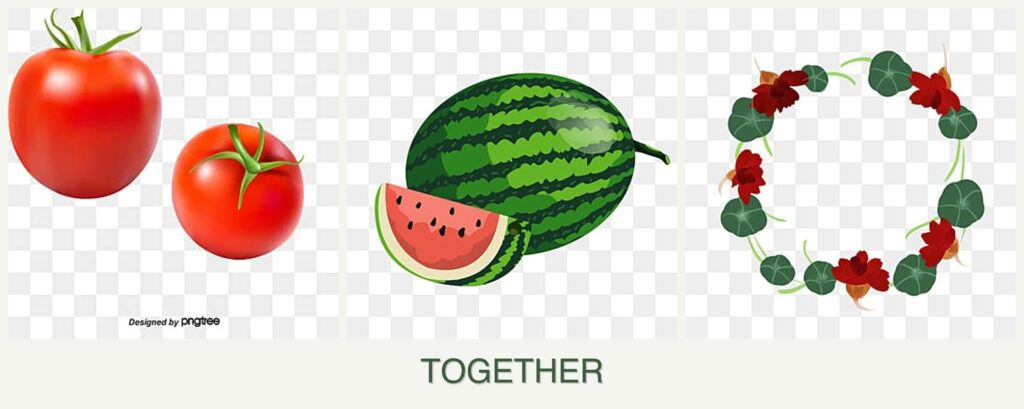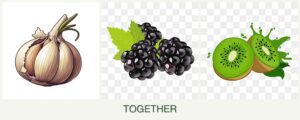
Can you plant tomatoes, melons and nasturtiums together?
Can You Plant Tomatoes, Melons, and Nasturtiums Together?
Companion planting is a time-honored gardening technique that enhances plant growth and health by strategically placing plants with complementary characteristics together. This article explores whether tomatoes, melons, and nasturtiums can be effectively grown together, examining their compatibility and offering practical gardening tips.
Compatibility Analysis
Yes, tomatoes, melons, and nasturtiums can be planted together, and they often thrive as companions. These plants complement each other in various ways, offering mutual benefits and enhancing garden productivity.
Growth Requirements
- Tomatoes and melons both require full sun, well-drained soil, and consistent watering. They are heavy feeders, needing nutrient-rich soil, which makes them suitable companions.
- Nasturtiums are versatile, thriving in poorer soils where other plants might struggle. They can act as a living mulch, helping to retain moisture and suppress weeds.
Pest Control
Nasturtiums are known for their pest-repellent properties, particularly against aphids and whiteflies, which can plague both tomatoes and melons. Their bright flowers also attract beneficial insects that help with pollination and pest control.
Nutrient Needs and Spacing
While tomatoes and melons have similar nutrient needs, nasturtiums require less, reducing competition for resources. Proper spacing is crucial to ensure each plant receives adequate sunlight and air circulation, minimizing disease risk.
Growing Requirements Comparison Table
| Plant | Sunlight Needs | Water Requirements | Soil pH | Hardiness Zones | Spacing | Growth Habit |
|---|---|---|---|---|---|---|
| Tomatoes | Full sun | Moderate | 6.0-6.8 | 3-11 | 18-24 inches | Upright, vining |
| Melons | Full sun | Moderate to high | 6.0-6.8 | 4-11 | 36-48 inches | Sprawling, vining |
| Nasturtiums | Full sun | Low to moderate | 6.1-7.8 | 9-11 | 10-12 inches | Trailing, bushy |
Benefits of Planting Together
- Pest Repellent: Nasturtiums deter pests, reducing damage to tomatoes and melons.
- Improved Growth: The presence of nasturtiums can enhance the growth of neighboring plants by attracting pollinators and beneficial insects.
- Space Efficiency: Nasturtiums’ trailing habit allows them to fill in spaces without competing aggressively for resources.
- Soil Health: Nasturtiums can improve soil health by adding organic matter as they decompose.
Potential Challenges
Competition for Resources
Tomatoes and melons both require significant nutrients, which can lead to competition if not managed properly. Ensuring ample space and soil fertility can mitigate this issue.
Different Watering Needs
While melons may require more water, nasturtiums prefer drier conditions. Careful watering practices, such as drip irrigation, can accommodate these differences.
Disease Susceptibility
Tomatoes and melons are susceptible to similar diseases, such as powdery mildew. Good air circulation and crop rotation can help prevent outbreaks.
Planting Tips & Best Practices
- Optimal Spacing: Ensure adequate space between plants to prevent overcrowding—tomatoes (18-24 inches), melons (36-48 inches), and nasturtiums (10-12 inches).
- Timing: Plant after the last frost when soil temperatures are consistently warm.
- Container vs. Garden Bed: While garden beds are ideal, containers can work if they are large enough to accommodate root systems and provide adequate drainage.
- Soil Preparation: Enrich soil with compost before planting to support tomato and melon growth.
- Additional Companions: Consider adding basil or marigolds, which also pair well with these plants and offer additional pest control benefits.
FAQ Section
Can you plant tomatoes and melons in the same pot?
- It’s not recommended due to their extensive root systems; a garden bed is more suitable.
How far apart should tomatoes and melons be planted?
- Tomatoes should be spaced 18-24 inches apart, while melons need 36-48 inches to spread.
Do tomatoes and melons need the same amount of water?
- Both require consistent moisture, but melons may need slightly more during fruiting.
What should not be planted with tomatoes, melons, and nasturtiums?
- Avoid planting tomatoes near potatoes due to disease risks, and keep melons away from cucumbers to prevent cross-pollination.
Will nasturtiums affect the taste of tomatoes or melons?
- No, nasturtiums do not affect the flavor of neighboring fruits.
When is the best time to plant tomatoes, melons, and nasturtiums together?
- Plant after the last frost date in your area, ensuring soil temperatures are suitable for each plant.
By understanding the compatibility and requirements of tomatoes, melons, and nasturtiums, gardeners can create a thriving, productive garden that maximizes the benefits of companion planting.



Leave a Reply